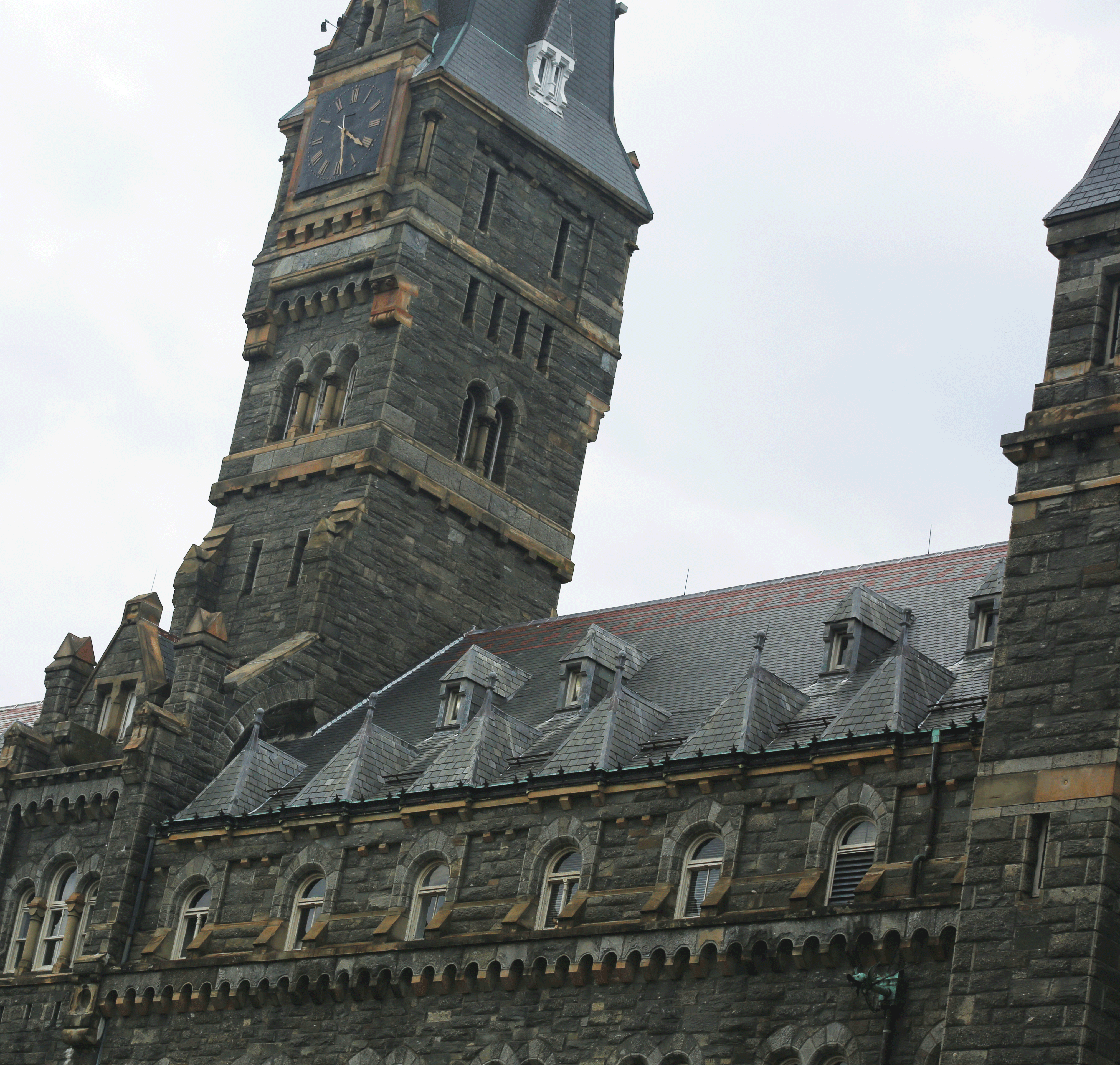
Georgetown’s endowment and donations to the university funded 23.2 percent of undergraduate scholarships, with the remainder being funded from the university’s operating expenses.
In the 2016 fiscal year, Georgetown’s endowment and donations to the university funded 23.2 percent of undergraduate scholarships, according to Dean of Student Financial Services Patricia McWade.
Over the past 10 years, the university has withdrawn $590 million from its $1.5 billion endowment, 39 percent, to fund academic research, professorships and undergraduate scholarships.
According to Chief Investment Officer Michael Barry, the allocation of the endowment is determined by donors, who often donate funds for specific purposes. Currently, 36 percent of the endowment is allocated to academic research, 30 percent to endowed professors, 24 percent to student aid such as scholarships, 8 percent to facilities and grounds and 2 percent to other uses.
Donors can make contributions in different forms, including current-use gifts, donations that can be spent at the discretion of the university and endowed gifts, gifts that are put toward the university’s endowment.
The university’s endowment recently saw a $648 million increase from its latest and most successful fundraising campaign, “For Generations to Come: The Campaign for Georgetown,” which ended July 30.
Georgetown’s endowment has long been exceeded by other universities; Harvard University’s endowment reached $35.7 billion in the 2016 fiscal year — down $2 billion from 2015 — while Yale University’s endowment reached $25.4 billion this year.
Vice President for Advancement Bart Moore (SFS ’87) said the university’s endowment is key to funding research, construction and general improvements to Georgetown life.
“Endowment is the base of resources that an institution can pretty reliably depend on every year [to] generate a reasonably predictable flow of income to support the most important work of the university,” Moore said.
About 40 percent of the funds raised in the “For Generations to Come: The Campaign for Georgetown” went to the university’s endowment, according to Barry.
Dean of Admissions Charles Deacon said the university has a strong focus on giving financial assistance to first-generation college students in the form of the Georgetown Scholarship Fund.
Georgetown is one of a few dozen colleges and universities including Harvard University and University of Pennsylvania that has a need-blind, full-need admissions policy through a combination of loans, grants and work-study.
According to Deacon, while financial aid needs at Georgetown are met, the money to fund this commitment comes out of the operating budget, which is less resilient than the endowment.
“If it comes out of the operating budget, it’s more of a strain on the budget, and endowment can support it, become self-sufficient, self-standing,” Deacon said.
Deacon said the money the university has affects its ability to attract the most skilled students.
“While we do meet the full need, we don’t do it in a very generous way. Most of the money is coming out of the operating budget rather than the endowment,” Deacon said. “In the end, our ability to enroll the most talented class is certainly impacted by the resources that are available to us.”
According to McWade, the size of the endowment does not affect the types of students Georgetown attracts because the university works to meet all the financial needs of students with a mix of funds from endowments, gifts and the operating budget.
The university aims for a 5 percent return on the endowment, including the rate of inflation, according to Barry. Sixty-four percent of the endowment is invested in public equity assets, 16 percent in absolute return, 6 percent in real estate, 6 percent in commodities, 5 percent in private equity and 3 percent in bonds.
The endowment has seen significant changes in recent years. Georgetown’s administration has been trying to expand its socially responsible investment policies, according to Barry.
In 2015, the board of directors committed to divest from coal companies after years of urging from student group GU Fossil Free and at the recommendation of the Committee on Investments and Social Responsibility, a committee of 12 that includes faculty, staff members, administrators and student representatives.
This year, the Investment Office is exploring investments that will have positive environmental, social and governance outcomes, with the belief that doing so can potentially enhance the endowment’s return, according to Barry.
Director of Protestant Chaplaincy Bryant Oskvig, who is on the Committee on Investments and Social Responsibility, said the committee enables the university to make socially responsible investments.
“This committee has really served as a place to really extend the conversation about how we as a community [understand] ourselves as investors in the market, and how we allow our values to be a part of that conversation, and how we make investment decisions in that way,” Oskvig said.
Georgetown University Student Association President Enushe Khan (MSB ’17) said GUSA looks to promote student interests and Jesuit values on the committee through its student appointee.
“We set the tone of what we want, and we set the vision for what we want the student’s engagement to be like, and we try to shape how we want the student to be productive in the conversation,” Khan said. “In terms of GUSA, we are held to these Jesuit values of the campus, and so something that’s important is that the university does the same.”
Moore said the endowment is important beyond mere financial stability and support for the university.
“Our desire to invest in the current and future mission of the institution is always expanding,” Moore said. “This is, from my point of view, inherent to the Jesuit culture of the place: this sense of what more can we be, and what more can we do.”




















